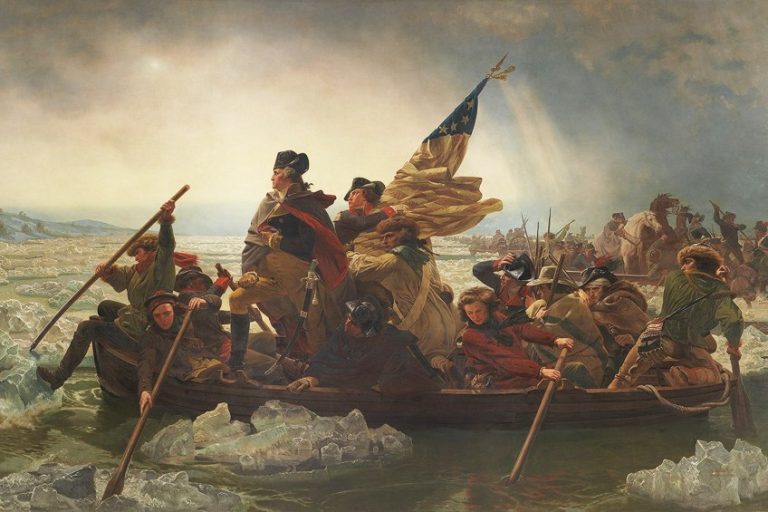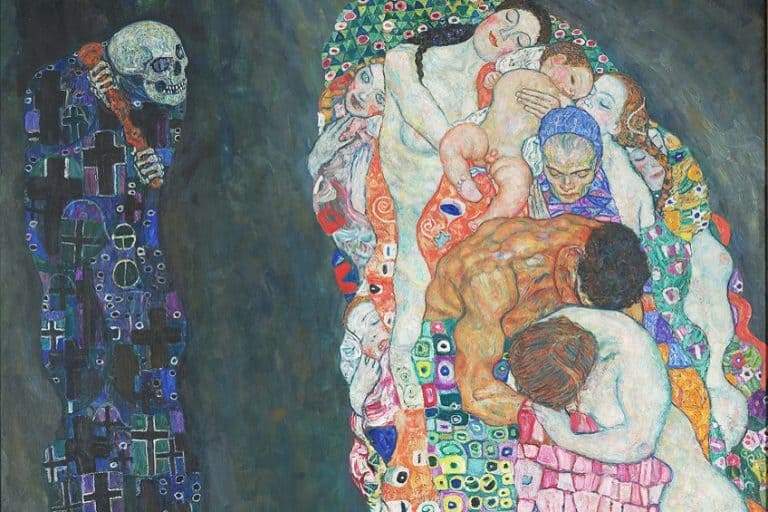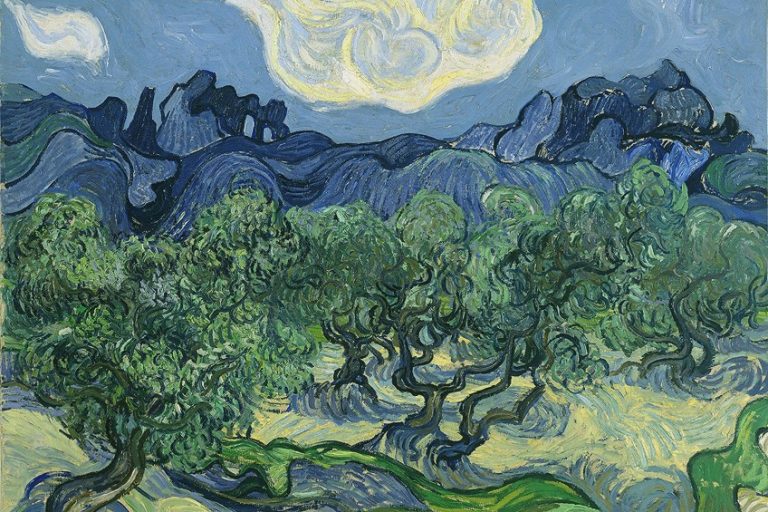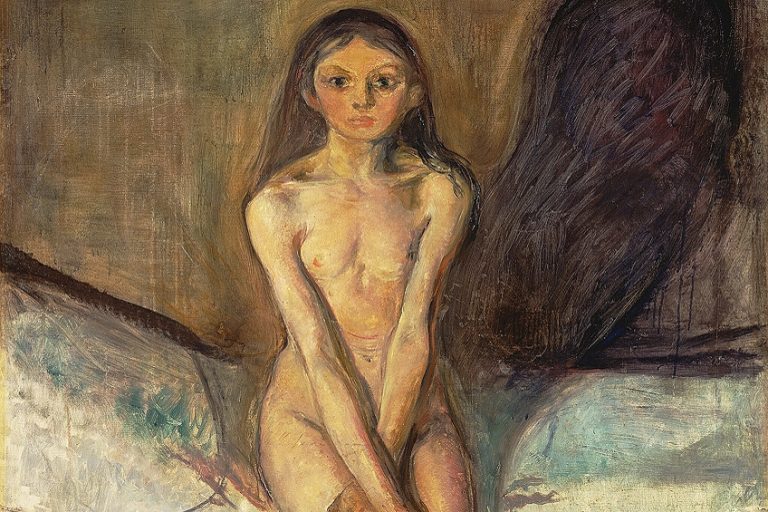“Rosie the Riveter” by Norman Rockwell – An Artwork Analysis
Rosie the Riveter, painted by Norman Rockwell in 1943, is an iconic portrayal of the American working woman during World War II. Commissioned for the cover of the May 29, 1943, issue of The Saturday Evening Post, this artwork captures the spirit of the Rosie the Riveter campaign, which encouraged women to join the workforce and support the war effort. Rockwell’s Rosie, depicted with muscular arms and a determined expression, is shown taking a lunch break, her foot resting on a copy of Adolf Hitler’s Mein Kampf. This powerful image, with its patriotic undertones and celebration of female strength, became a symbol of female empowerment and resilience, reflecting the critical role women played on the home front during the war.
Key Takeaways
- Norman Rockwell’s Rosie the Riveter was featured on the Saturday Evening Post cover in 1943.
- Rosie represents the women who worked in defense industries during World War II.
- The legacy of Rosie the Riveter symbolizes female empowerment and resilience.
Historical Context and Significance
| Artist | Norman Rockwell (1894 – 1978) |
| Date Created | 1943 |
| Medium | Oil on canvas |
| Genre | History painting |
| Period/Movement | American Realism and Regionalism |
| Dimensions (cm) | 132.1 x 101.6 |
| Series/Versions | None |
| Where Is It Housed? | Crystal Bridges Museum of American Art, Bentonville, Arkansas, United States |
| What It Is Worth | Estimated at $20-30 million (value based on recent market trends and historical significance) |
Rosie the Riveter, an iconic American cultural symbol, represents the women who took on industrial jobs during World War II. Norman Rockwell’s depiction of Rosie, featured on the cover of The Saturday Evening Post on May 29, 1943, captures this powerful moment in history. In Rockwell’s illustration, Rosie combines elements of strength and femininity, embodying the spirit of the women who kept the American workforce thriving in a time of war.

Rockwell’s Rosie the Riveter is portrayed as a robust woman taking a break from her work. She sits with a rivet gun on her lap, her face and arms dirty, suggesting the physical effort put into her work. This image became a staple of American wartime propaganda, symbolizing the unprecedented entry of women into the workforce. Rosie’s representation extends beyond the artwork itself. Over the years, she has evolved into a symbol of female empowerment and resilience.
Although she was born out of a specific historical necessity, Rosie the Riveter’s legacy continues to inspire and empower women globally.
World War II and the American Workforce
During World War II, the United States faced immense challenges that required mobilization across all segments of society. As millions of men joined the armed forces, there was an urgent need for labor in factories, munitions plants, and other essential industries. The government initiated extensive propaganda campaigns to recruit women into the workforce. Women took on roles traditionally held by men, significantly increasing female participation in industrial labor. This marked a pivotal change in societal norms and expectations regarding gender roles in the workplace. Factories producing military equipment, such as aircraft and ships, were hotspots for this shift. Women learned to operate heavy machinery, wield tools, and manage complex assembly lines. The portrayal of women in these roles was not just about filling vacancies but also about fostering a sense of duty and patriotism among female workers.

Rosie the Riveter as a Cultural Icon
Rosie the Riveter became an enduring symbol of women’s contributions to the war effort. The image depicted by Norman Rockwell on the cover of The Saturday Evening Post on May 29, 1943, played a crucial role in shaping this iconography. In Rockwell’s rendition, Rosie is muscular and determined, signifying strength and resilience. Rosie’s appearance, with her overalls, goggles, and lunchbox, presented a stark contrast to traditional female domesticity. Her portrayal aimed to inspire and empower women to take on roles in defense industries. Rosie’s figure was further popularized through war bond drives and other government-sponsored initiatives. The impact of Rosie the Riveter extended beyond the war, as she continued to represent the capabilities and potential of women in various fields.
The legacy of Rosie influenced subsequent movements for gender equality and remains a potent symbol of women’s empowerment.
Norman Rockwell’s Creation
Norman Rockwell’s Rosie the Riveter showcases a powerful blend of inspiration from historic art pieces and modern societal elements, revealing strong influences and public reception that marked a significant period in American art history.

Inspiration and Artistic Influences
Rockwell drew inspiration from various sources, notably Michelangelo’s Sistine Chapel. Rosie the Riveter’s pose mimics the prophet Isaiah, showcasing Rockwell’s appreciation for classical art. His intricate depiction of Rosie eating a sandwich with a rivet gun on her lap highlights the juxtaposition of femininity and strength. Additionally, the painting includes subtle details, such as Hitler’s Mein Kampf under her foot, reflecting patriotic symbolism.
His techniques and artistic choices underline his ability to blend historical reverence with contemporary societal themes.

The Saturday Evening Post and Public Reception
Debuting on May 29, 1943, Rosie the Riveter graced the cover of The Saturday Evening Post, a popular magazine. Its vivid portrayal of a determined woman resonated with the American public during World War II. The image quickly became iconic, representing the empowerment of women in the workforce. The magazine’s wide circulation ensured extensive reach, amplifying Rosie’s impact on American culture. Rockwell’s creation not only received praise for its artistic quality but also played a pivotal role in shaping public perception of women’s contributions during the war.
This blend of art and society solidified its place in American history.

Evolution of Rosie the Riveter
The image of Rosie the Riveter has undergone significant transformation, from Norman Rockwell’s iconic painting to the real-life women who became symbols of the wartime workforce. Each iteration highlights different aspects of the American experience during World War II. Norman Rockwell created the famous painting of Rosie the Riveter, featured on the cover of The Saturday Evening Post on May 29, 1943. His Rosie was depicted as a strong, muscular woman taking her lunch break with a rivet gun on her lap and a copy of Mein Kampf beneath her feet.

Rockwell’s version of Rosie became an emblem of strength and resilience. J. Howard Miller’s subsequent portrayal of Rosie in the “We Can Do It!” poster further cemented her image. Miller’s Rosie was more of a motivational icon, characterized by the iconic pose of flexing her arm under the slogan, “We Can Do It!” This version of Rosie became widely recognized and reinterpreted, symbolizing female empowerment beyond the war era.
Real-Life Rosies
Rosalind P. Walter was one of the inspirations for the original Rosie the Riveter. She worked on the night shift driving rivets into the metal bodies of Corsair fighter planes. Her efforts were immortalized in the song “Rosie the Riveter,” which contributed to the popularity of the name. Another notable figure is Naomi Parker Fraley, whose image closely resembles Miller’s poster. Naomi was originally photographed working at an aircraft assembly plant, and for years her true identity was obscured until her recognition in the 2010s. Other significant Rosies include Mary Doyle Keefe, who served as the model for Rockwell’s painting, and Rose Will Monroe, who appeared in promotional films to encourage war effort participation.
These women not only exemplified the diverse roles women took on during the war but also continued to inspire future generations.
Legacy and Cultural Impact
Rosie the Riveter by Norman Rockwell stands as an enduring symbol of women’s empowerment and the role of women in the workforce. Her significance extends into contemporary media and collective memories, reflecting ongoing discussions about gender roles and equality.

Representation of Women and Femininity
Rockwell’s Rosie the Riveter redefined femininity by merging strength and traditional feminine elements. Depicted in men’s work clothes but still maintaining a touch of femininity, she symbolized a new era for women. Her portrayal contradicted typical female stereotypes of the time, showcasing them as capable of contributing significantly to war efforts.
This representation paved the way for changing perceptions of women’s capabilities in various sectors beyond domestic spheres.
Rosie in Modern Media and Memory
Rosie continues to be a powerful cultural icon, often invoked in contemporary discussions about women’s rights and equality. Her image has been adapted in numerous forms, from posters to advertisements. Modern media revisits her to highlight ongoing struggles and successes of women in the workforce. Annual Rosie the Riveter events and community projects keep her legacy alive, emphasizing her impact on both historical and modern narratives of women’s empowerment.

Norman Rockwell’s Rosie the Riveter stands as a monumental testament to the vital contributions of women during World War II. Through its powerful imagery and evocative symbolism, the painting transcends its original purpose as a magazine cover to become a lasting icon of female empowerment and patriotism. Rockwell’s masterful depiction not only captured the era’s social and cultural dynamics but also continues to inspire and resonate with audiences today. Rosie the Riveter remains a timeless representation of strength, resilience, and the transformative impact of women in the workforce, solidifying its place in the annals of American art and history.
Frequently Asked Questions
What Does the Depiction of Rosie the Riveter by Norman Rockwell Symbolize?
Norman Rockwell’s depiction symbolizes the strength and determination of women who took on industrial jobs during World War II. The image shows a muscular woman taking a break from riveting, representing the vital role women played in the war effort.
Who Served As the Inspiration for Norman Rockwell’s Portrayal of Rosie the Riveter?
Rockwell’s Rosie was modeled by Mary Doyle Keefe, a 19-year-old telephone operator. Keefe posed for the painting in Arlington, Vermont, and Rockwell adapted her likeness to create a robust, industrious character.
What Was the Intended Message Behind Norman Rockwell’s Rosie the Riveter Artwork?
The intended message was to honor and recognize the contributions of women in the workforce during the war. Rockwell aimed to inspire pride and boost morale among women, showing that they were capable and crucial to the nation’s success.
How Did Norman Rockwell’s Rosie the Riveter Contribute to the War Effort During World War II?
The painting was featured on the cover of The Saturday Evening Post on May 29, 1943. It received mass distribution and became a symbol of female empowerment, encouraging more women to join the workforce and support the war effort.
Isabella studied at the University of Cape Town in South Africa and graduated with a Bachelor of Arts majoring in English Literature & Language and Psychology. Throughout her undergraduate years, she took Art History as an additional subject and absolutely loved it. Building on from her art history knowledge that began in high school, art has always been a particular area of fascination for her. From learning about artworks previously unknown to her, or sharpening her existing understanding of specific works, the ability to continue learning within this interesting sphere excites her greatly.
Her focal points of interest in art history encompass profiling specific artists and art movements, as it is these areas where she is able to really dig deep into the rich narrative of the art world. Additionally, she particularly enjoys exploring the different artistic styles of the 20th century, as well as the important impact that female artists have had on the development of art history.
Learn more about Isabella Meyer and the Art in Context Team.
Cite this Article
Isabella, Meyer, ““Rosie the Riveter” by Norman Rockwell – An Artwork Analysis.” Art in Context. June 18, 2024. URL: https://artincontext.org/rosie-the-riveter-by-norman-rockwell/
Meyer, I. (2024, 18 June). “Rosie the Riveter” by Norman Rockwell – An Artwork Analysis. Art in Context. https://artincontext.org/rosie-the-riveter-by-norman-rockwell/
Meyer, Isabella. ““Rosie the Riveter” by Norman Rockwell – An Artwork Analysis.” Art in Context, June 18, 2024. https://artincontext.org/rosie-the-riveter-by-norman-rockwell/.











